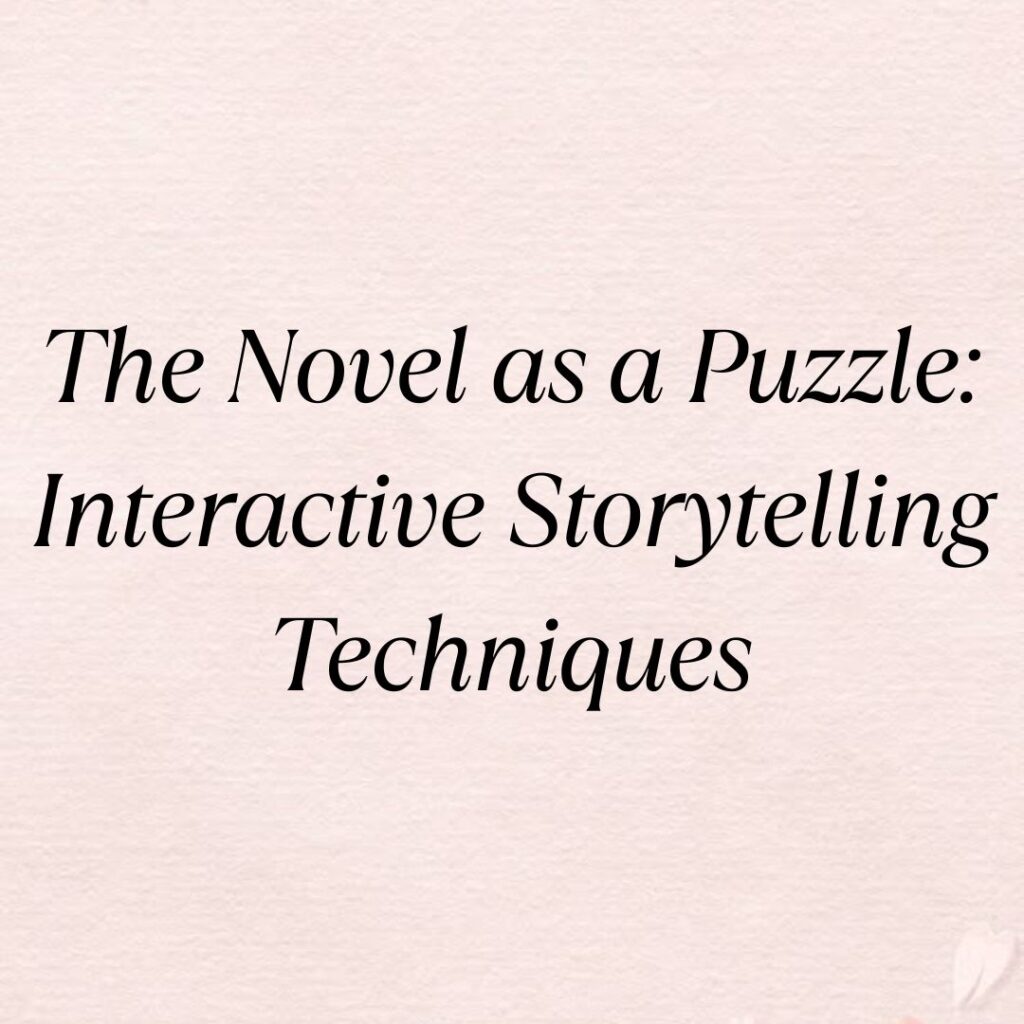Welcome to Riya’s Blogs, where we delve into the fascinating realm of literature and storytelling. Today, we embark on a journey through the intricacies of interactive storytelling techniques, exploring how novels can be crafted as engaging puzzles that captivate readers’ imaginations and intellects.
Unraveling the Concept of Interactive Storytelling
Imagine a novel not just as a passive experience but as an interactive puzzle waiting to be solved. This concept goes beyond the traditional linear narrative structure, inviting readers to actively participate in piecing together the story’s elements. Interactive storytelling techniques transform the reader from a mere observer into an explorer, navigating through plot twists, character motivations, and hidden clues.
The Evolution of Narrative Structure
In recent years, authors have increasingly experimented with non-linear narratives and multiple perspectives to create a more immersive reading experience. This evolution mirrors the digital age’s demand for interactivity and engagement, where readers crave more than just a passive consumption of content.
Elements of Interactive Storytelling
1. Branching Narratives:
One of the hallmark techniques in interactive storytelling is the use of branching narratives. Similar to choose-your-own-adventure books, these novels offer readers choices that impact the direction of the plot. Each decision opens new pathways, revealing different facets of the story and characters.
2. Puzzle-like Structure:
Some novels are deliberately structured like puzzles, where fragments of information are scattered throughout the text. Readers must piece together these clues to uncover the overarching narrative or solve a mystery embedded within the story. This technique not only engages readers intellectually but also encourages active participation.
3. Metafictional Devices:
Authors often employ metafictional devices such as footnotes, alternate endings, or even interactive online components (like Riya’s Blogs) to blur the lines between fiction and reality. These devices invite readers to question the nature of storytelling itself, enhancing the overall reading experience.
Examples of Interactive Storytelling in Literature
– House of Leaves by Mark Z. Danielewski:
This novel employs unconventional formatting, footnotes, and appendices to create a labyrinthine narrative that mirrors the psychological descent of its characters. Readers must navigate through different layers of text and references to uncover the true story hidden within.
– If on a winter’s night a traveler by Italo Calvino:
Calvino’s novel presents itself as a series of beginnings of other novels, challenging readers to piece together fragments of stories while reflecting on the act of reading itself. It’s a playful yet profound exploration of narrative structure and reader engagement.
The Impact on Reader Engagement and Reception
Interactive storytelling techniques not only redefine the reading experience but also influence how novels are perceived and appreciated. Readers become more invested in the story’s outcome, forging a deeper connection with characters and themes. This heightened engagement often leads to richer discussions and interpretations, fostering a community of literary enthusiasts eager to unravel each narrative puzzle.
Conclusion
As we conclude our exploration into the novel as a puzzle through interactive storytelling techniques, it becomes clear that literature continues to evolve alongside technological advancements and changing reader expectations. By embracing these techniques, authors can craft narratives that challenge, provoke, and ultimately inspire readers to actively participate in the storytelling process.
Visit Riya’s Blogs for more insights into literature, storytelling techniques, and the evolving landscape of interactive fiction. Join us in unraveling the mysteries of narrative puzzles and discovering new dimensions of literary exploration. Happy reading!







